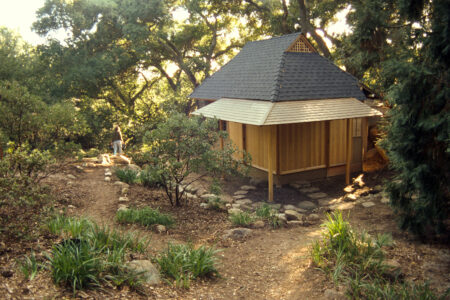10th Annual Santa Barbara Botanic Garden Conservation Symposium
- Instructor
- See List of Speakers
- Location
- Santa Barbara County Education Office
- Date
- February 25, 2023
- Time
- 10:00AM - 4:45PM
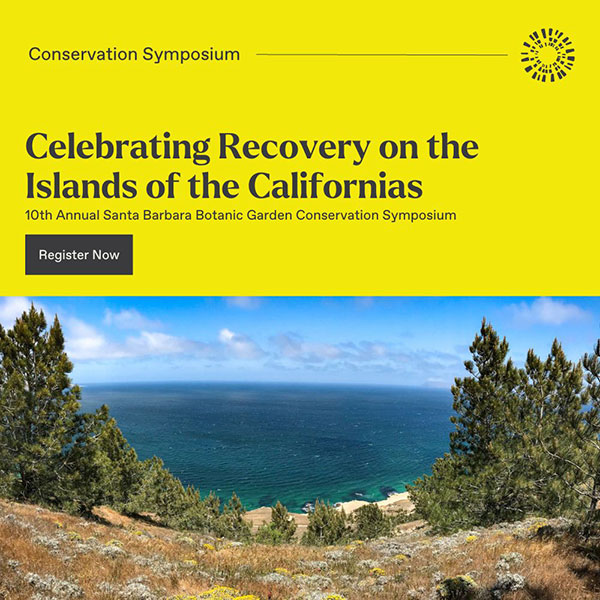
Explore more topics
Sponsored by the Nakashima-Rennie Family.
Celebrating Recovery on the Islands of the Californias
The islands of the Californias are precious gems strung along a section of the coast of western North America — stunningly beautiful and home to unique plants and animals found nowhere else in the world, like the diminutive island fox, the cobalt blue Island Scrub-Jay, the iconic island oak (Quercus tomentella), and brilliant island mallows (Malva spp.). However, these unique ecosystems are particularly vulnerable to introduced species. In fact, 75% of bird, mammal, and reptile extinctions have occurred on islands. On these islands along the coast of California and Baja California, Mexico, a suite of nonnative, invasive animals were introduced between around 150 to 100 years ago. Fenced in by the ocean with no animal predators, populations of sheep, goats, deer, and more reached unsustainable densities. Having evolved without any herbivores larger than a rodent, the naïve island plants had lost their defensive spines and chemicals, and were targeted like baby salad mix. Voracious rats, cats, and mice plucked baby seabirds from the cliffs. Argentine ants did more damage than creatures many times their size and biomass, inhibiting native insects, rodents, and reptiles. Without the native vegetation to hold it together, bare soils eroded in sheets off of the landscape, leaving tree roots exposed up to an adult human’s hip. Whole new sandspits were formed from the eroding soil — enough to alter topographic maps. Fisheries suffered from the influx of sediment.
Fortunately, indomitable conservationists stepped in across the archipelago — from both federal agencies and nongovernmental organizations — to do the near impossible job of removing these invaders. Against steep logistical, legal, and political headwinds, these conservation heroes stayed firm in their knowledge that the islands couldn’t recover without this crucial action. And they made it happen. In February 2023, Santa Barbara Botanic Garden will celebrate three of the many conservation heroes who have led these efforts: Peter Schuyler from The Nature Conservancy and Catalina Island Conservancy, Kate Faulkner from the National Park Service, and Grupo de Ecología y Conservación de Islas in Baja California. We’ll be celebrating their work and the recovery that followed: vegetation transforming from a sea of invasive grasses to diverse native shrublands, rare birds recovering and recolonizing, and pollinators going about their work unhindered. We’ll also applaud the other efforts that were made possible through the recovery process: the planting of thousands of oaks, pines, manzanitas, and more; the fastest removal of a mammal (the island fox) from the endangered species list in history; and the recovery and delisting of six endangered plants. In addition, we’ll discuss how we can continue this work until the longevity and resilience of the islands’ unique flora and fauna are secured.
Agenda and Speaker Lineup
| 10 – 10:45 | Intro | Welcome and Introduction to the islands Denise Knapp, Ph.D., director of conservation and research at Santa Barbara Botanic Garden |
| 10:45 – 11:10 | Keynote | People, Partnerships, and Persistence: Key Factors for Successful Conservation Kate Faulkner, Channel Islands National Park (retired) |
| 11:10 – 11:35 | Keynote | Moving Forward by Subtraction: Opening Recovery Options on Santa Cruz and Catalina Islands Following Removal of Introduced Animals Peter Schuyler, The Nature Conservancy California & Catalina Island Conservancy (retired) |
| 11:35 – 12 | Keynote | Comprehensive Restoration of the Mexican Islands Federico Alfonso Méndez Sánchez, Ph.D., executive director, Grupo de Ecología y Conservación de Islas & Luciana Luna-Mendoza, Ph.D., Director of Ecology Grupo de Ecología y Conservación de Islas |
| 12 – 1 | Lunch | |
| 1 – 1:20 | Recovery Trajectories: Tales of Island Plants Kathryn McEachern, Ph.D., Research Plant Ecologist, U.S. Geological Survey |
| 1:20 – 1:40 | Stronger Together: A Collaborative Effort to Conserve and Recover 14 Listed Plants on the Channel Islands Heather Schneider, Ph.D., Rare Plant Biologist, Santa Barbara Botanic Garden |
| 1:40 – 2 | Post-feral Animal Removal Hangover: Putting Humpty Dumpty Back Together John Knapp, Senior Island Scientist, The Nature Conservancy |
| 2 – 2:20 | Break | Recovery on San Clemente Island: Largest Group Delisting in 50 Years of the Endangered Species Act Kim O’Connor, Conservation Program Manager, U.S. Navy Pacific Fleet |
| 2:40 – 3 | Restoring the Ecology of San Nicolas Island Bill Hoyer, Natural Resources Manager, U.S. Navy, San Nicolas Island |
| 3 – 3:20 | The Islands of the Californias: Stepping Stones to the Frontiers of Conservation Scott Morrison, Ph.D., Director of Conservation, The Nature Conservancy California |
| 3:20 – 3:40 | Break | |
| 3:40 – 4:40 | Panel Discussion | Call to Action: From the Islands of the Californias to the Future of Conservation Moderated by Denise Knapp, Ph.D., director of conservation and research at Santa Barbara Botanic Garden |
About Santa Barbara Botanic Conservation Symposium
At our annual Conservation Symposium, we bring conservation heroes and engaging experts together with students, land managers, conservation practitioners, and educators. We examine issues from various angles and then follow with a panel discussion to illuminate how we can all contribute and what we can do even better moving forward. Our participants leave with the knowledge and energy to further the mission of conserving native plants and habitats for the health and well-being of people and our planet.
Click here for a full list of our previous symposium topics and our honorees.
Pricing and Registration:
Registration closed on February 23 at 12 p.m. You can still tune in to our livestream.
Scroll for Speaker Bios

Kate Faulkner
Kate Faulkner was the chief of the Natural Resources Division for Channel Islands National Park from 1990 to 2016. She will speak about the complex rat, deer, and elk eradications that she led on Anacapa and Santa Rosa islands, including the difficulties of making that happen, the importance of collaborations and supporters, and the impressive bird and plant recovery that followed.

Peter Schuyler
Peter Schuyler was the director of the Santa Cruz Island Preserve for The Nature Conservancy from 1980 to 1989, where he led sheep eradication and cattle removal. He was also the director of ecological restoration for Catalina Island Conservancy from 1997 to 2004, where he achieved goat and pig eradication on the most populous Channel Island. He will tell us about the complexities of those efforts and the subsequent recovery.
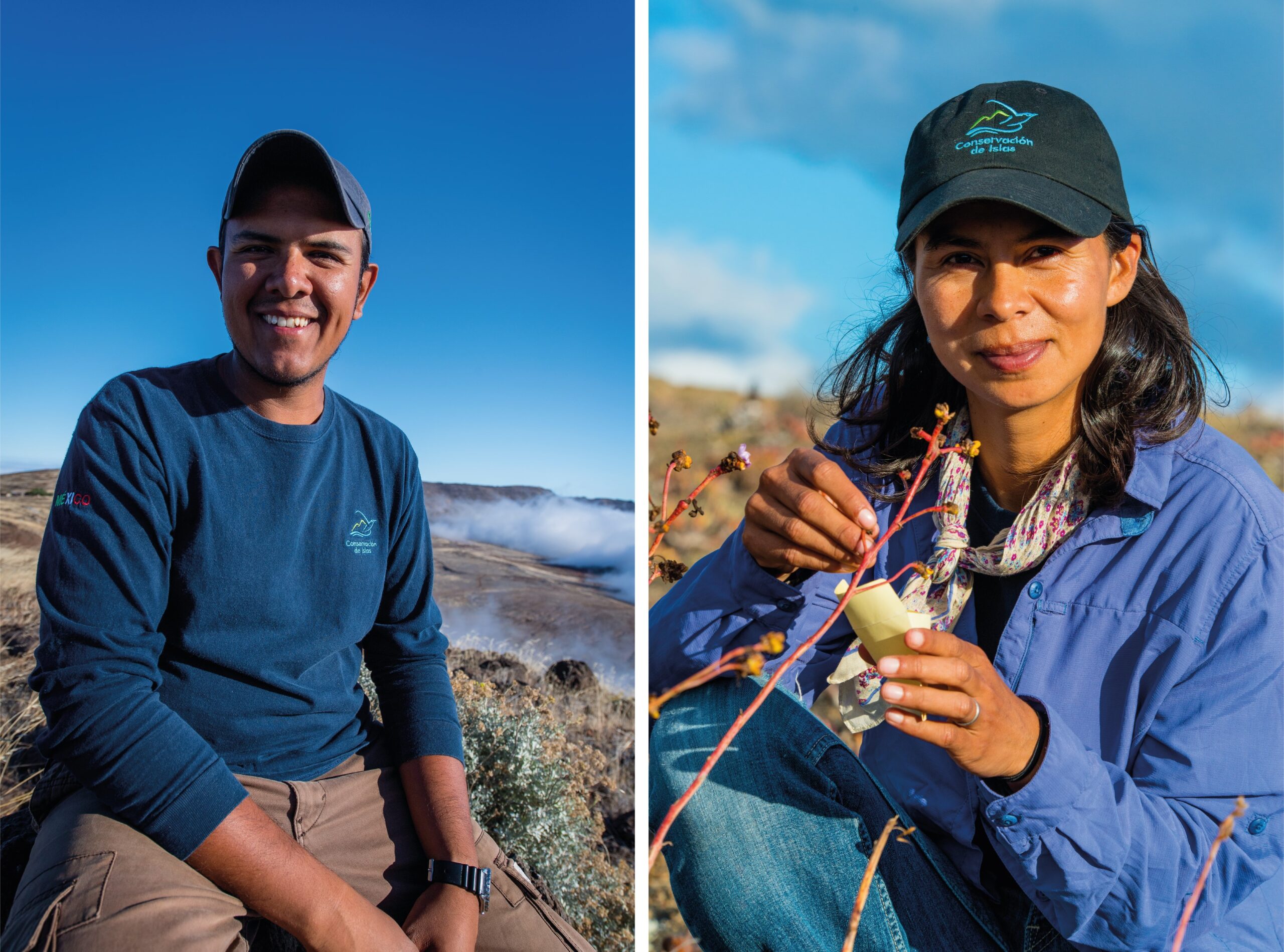
Grupo de Ecología y Conservación de Islas
Federico Alfonso Méndez Sánchez, Ph.D., is the director general and Luciana Luna-Mendoza, Ph.D., is the director of ecology at the Grupo de Ecología y Conservación de Islas in Ensenada, Mexico. They will discuss their work regarding the comprehensive restoration of Mexico’s islands and will share specifically about the eradication of goats on Isla Guadalupe and the amazing natural recovery that followed. They will also tell us about the ongoing, extensive recovery efforts of rare pine, palm, and cypress.
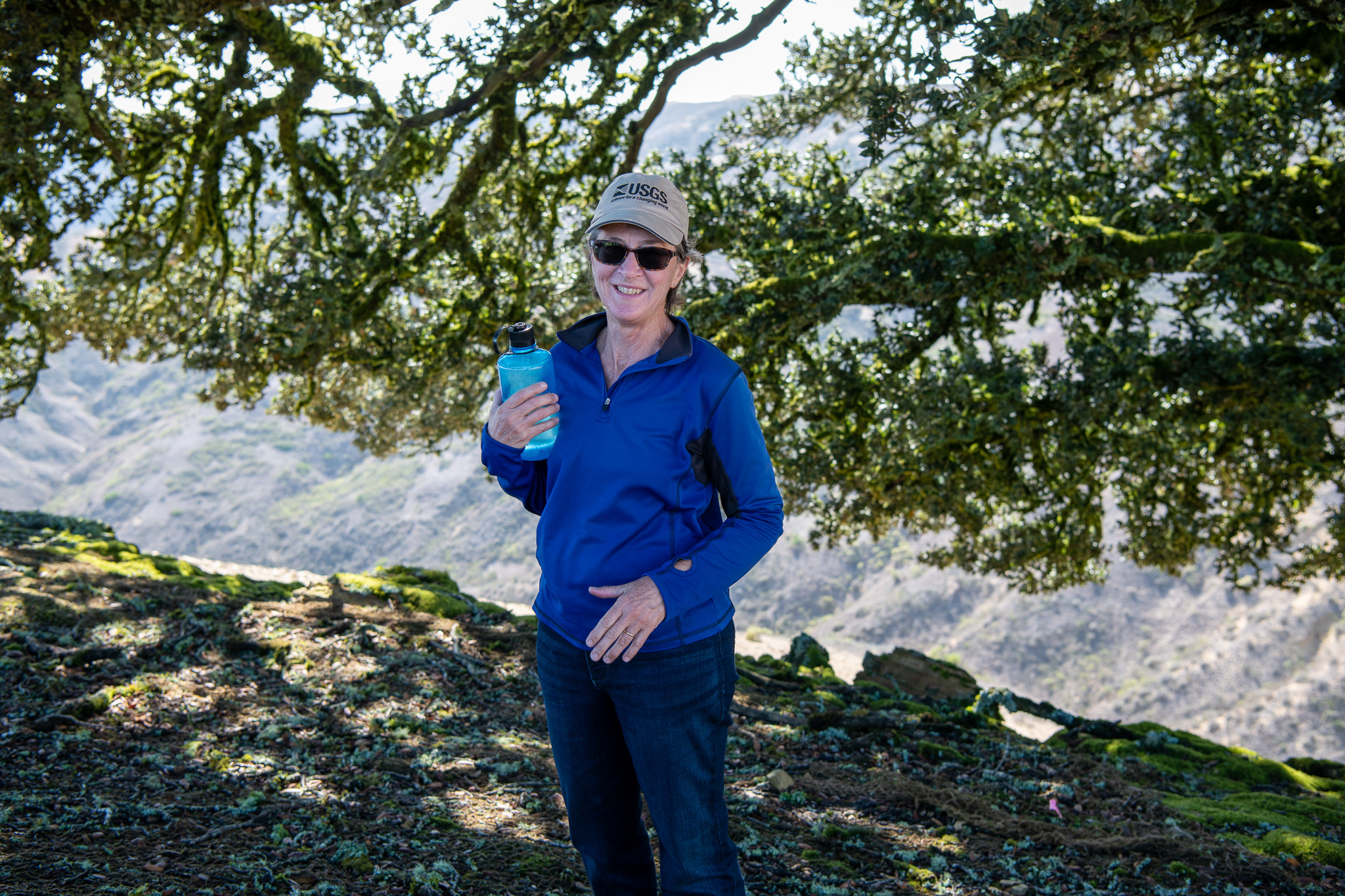
Kathryn McEachern, Ph.D.
Kathryn McEachern, Ph.D., is a research plant ecologist for the U.S. Geological Survey at the Channel Islands Field Station. She will tell us about her three decades of work to understand and recover rare plants within Channel Islands National Park, as well as more recent efforts to restore island oaks and ecosystems through the ambitious Cloud Forest Restoration Project.
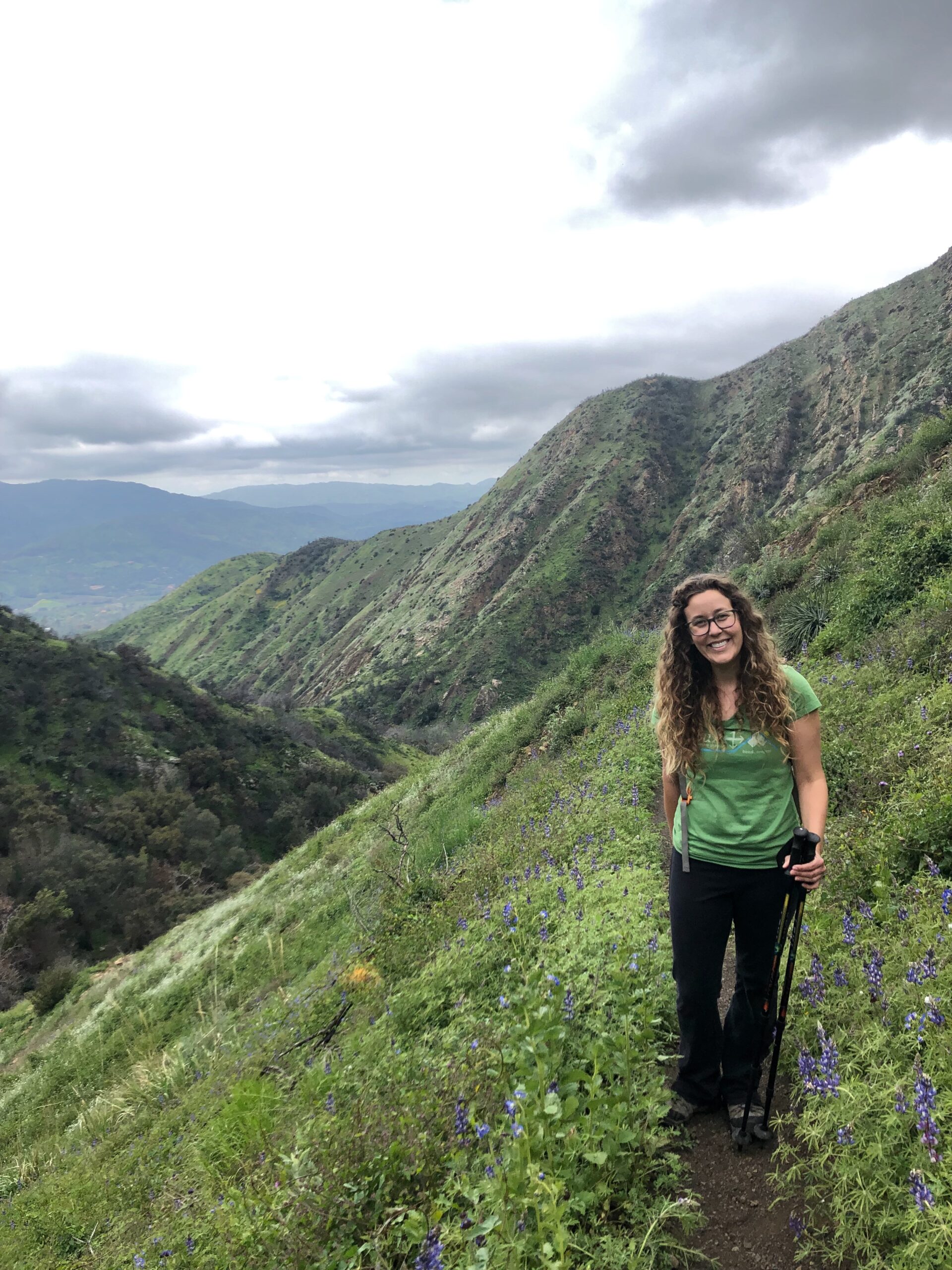
Heather Schneider, Ph.D.
Heather Schneider, Ph.D., is the lead rare plant biologist at Santa Barbara Botanic Garden, where she works collaboratively to tackle rare plant challenges from the genetic to the ecosystem level. She will be speaking about the conservation gains achieved over the past four years through a major collaborative project to recover 14 island rare plant species on seven of the eight Channel Islands.
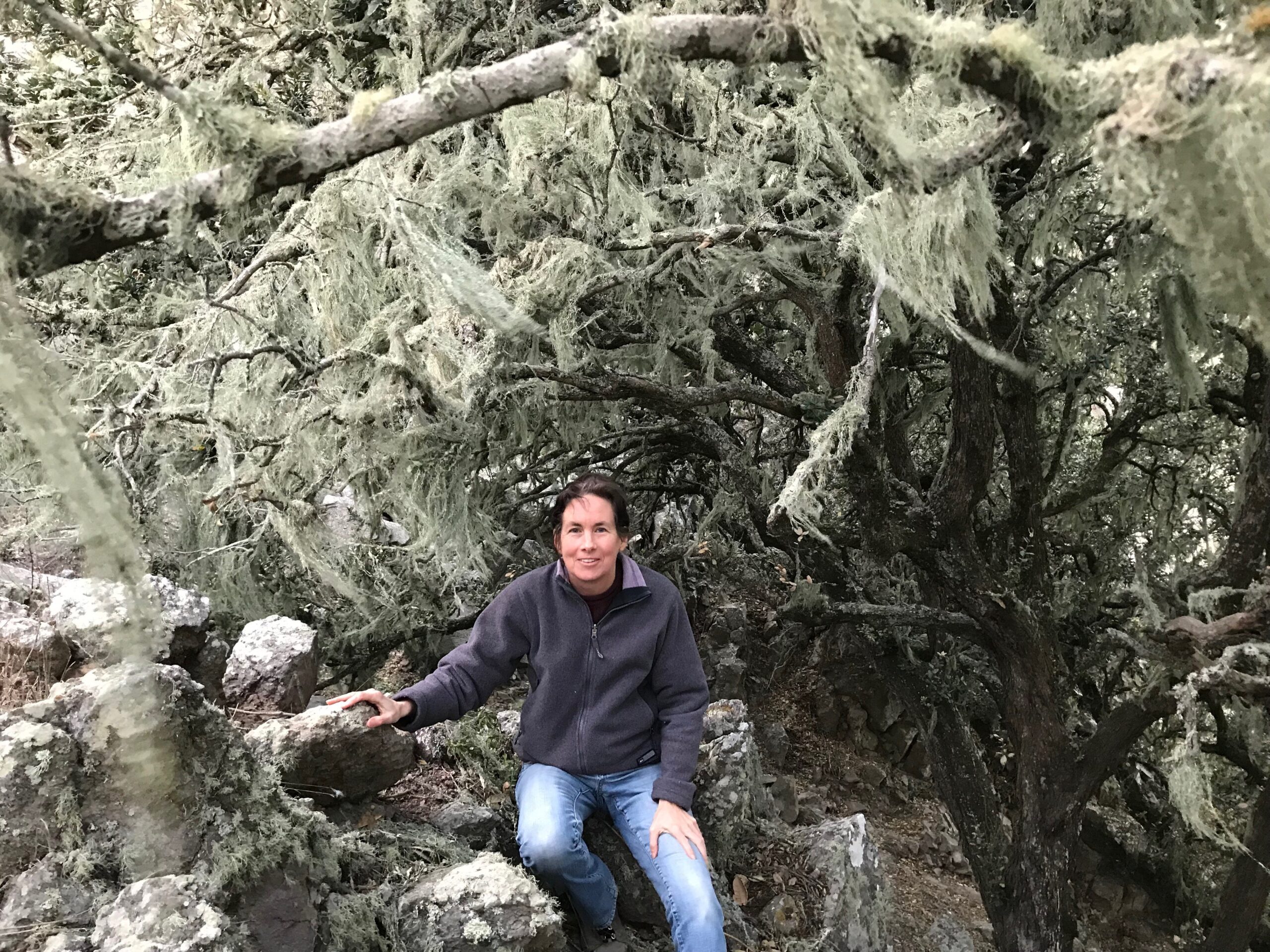
Kim O’Connor
Kim O’Connor became conservation program manager for the Pacific Fleet of the U.S. Navy after serving as botany program manager on San Clemente Island. She will discuss the natural recovery on that island after the removal of feral goats, and the extensive rare plant recovery and habitat restoration efforts that are now leading to the delisting of four endangered plants.
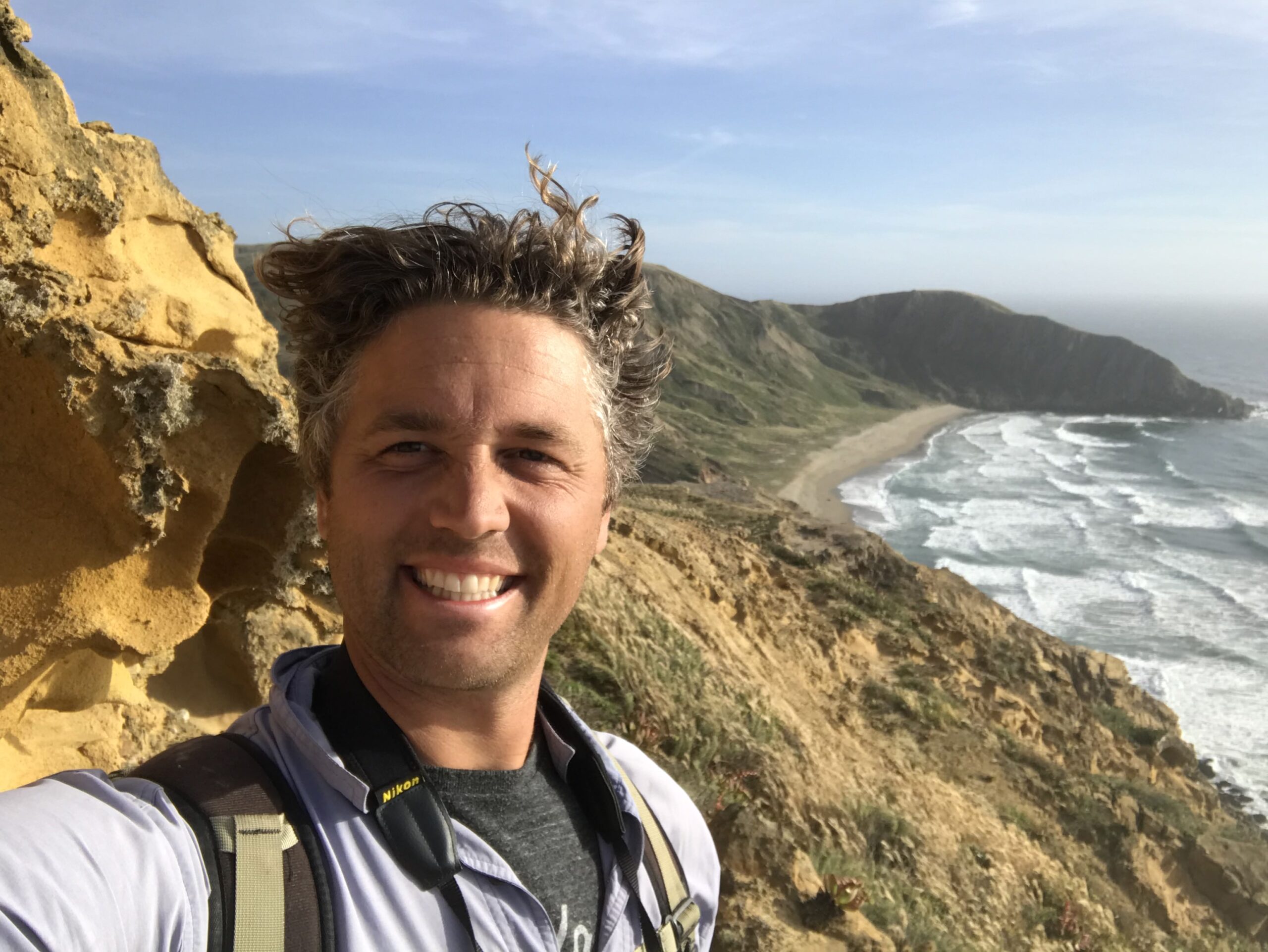
Bill Hoyer
Bill Hoyer is the natural resources manager for the U.S. Navy on San Nicolas Island. He will discuss the multifaceted and highly collaborative feral cat removal efforts on that island, the subsequent recovery and delisting of the rare island night lizard, and the extensive habitat restoration efforts that he is leading to curb erosion and regain biodiversity for resilience into the future.
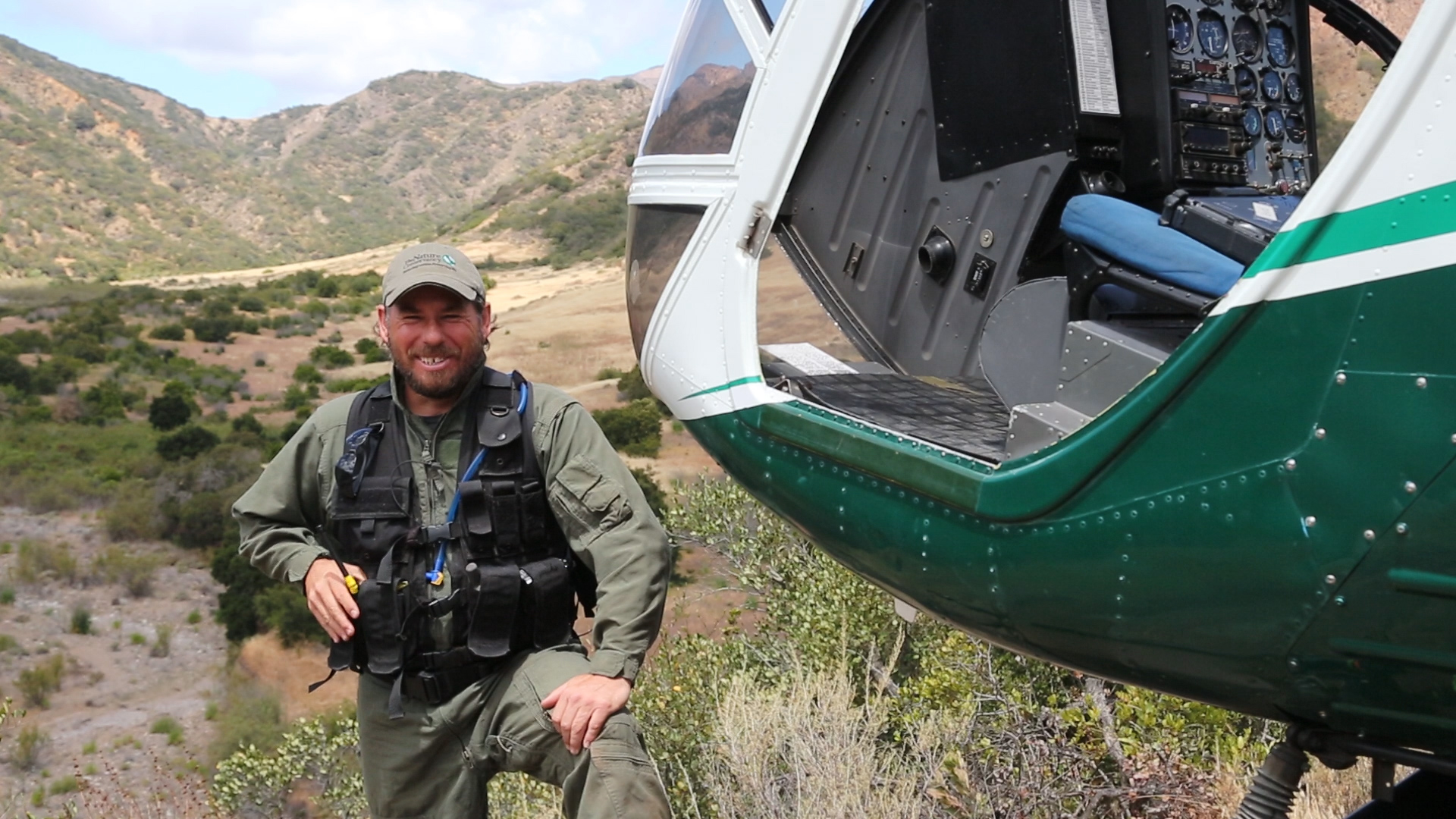
John Knapp
John Knapp is a senior island scientist for The Nature Conservancy and the founder of the Catalina Habitat Improvement and Restoration Program for the Catalina Island Conservancy. He will describe his landscape-level approach to invasive plant eradication efforts on Catalina and Santa Cruz islands, as well as the Argentine ant eradication and rare plant recovery efforts on Santa Cruz Island.

Scott Morrison, Ph.D.
Scott Morrison, Ph.D., is the director of conservation programs and science for the California Chapter of The Nature Conservancy. He will describe the recovery of the island fox (the fastest mammal delisting in U.S. history), the inspiring habitat recovery following feral animal removal efforts, the importance of island collaborations, and the path forward for the archipelago.
 Donate
Donate
